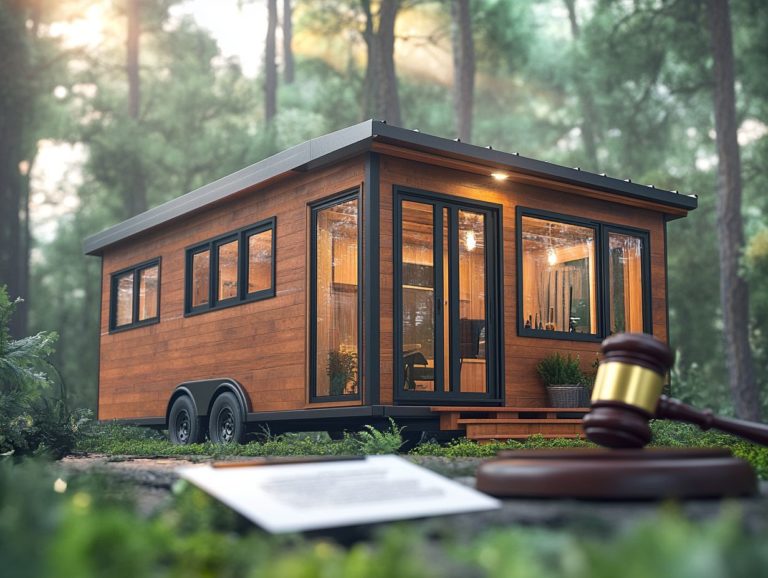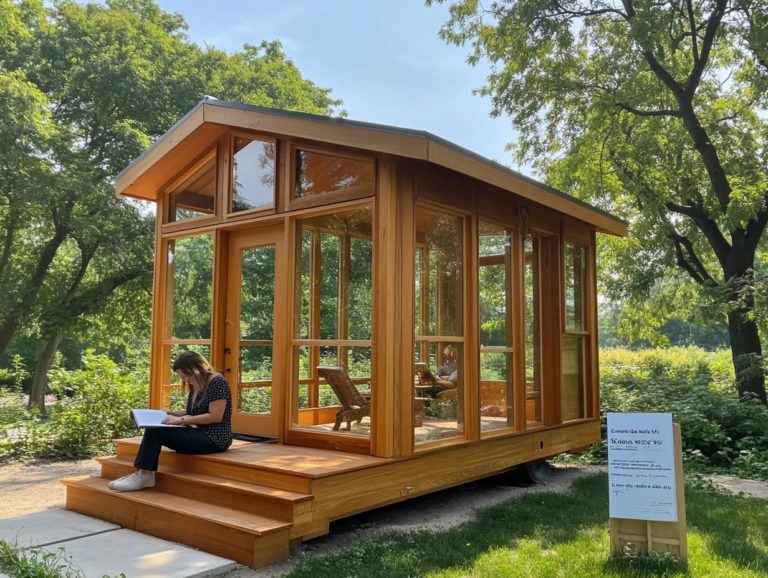Navigating Local Ordinances for Tiny Houses
Tiny houses present an enticing alternative to conventional living. However, understanding local ordinances is essential for a successful shift to this lifestyle.
Zoning laws and building codes, along with other regulations, can significantly influence where and how you can establish your tiny home.
Explore the types of local ordinances you should consider, learn how to research and interpret them effectively, and discover practical tips for staying compliant.
Gain insights on navigating potential challenges and building supportive relationships with local officials and communities.
Get ready to start your exciting journey into tiny living today, whether it’s in Pima County or Coconino County.
Contents [hide]
- Key Takeaways:
- Understanding Local Ordinances for Tiny Houses
- Types of Local Ordinances to Consider
- Researching Local Ordinances
- Navigating Challenges with Local Ordinances
- Working with Local Officials and Communities
- Tips for Staying Compliant with Local Ordinances
- Frequently Asked Questions
- What are local ordinances for tiny houses?
- Why is it important to navigate local ordinances for tiny houses?
- Can I legally live in a tiny house in any location?
- Are there different types of local ordinances for tiny houses?
- How can I find out about local ordinances for tiny houses in my area?
- What should I do if there are no local ordinances for tiny houses in my area?
Key Takeaways:
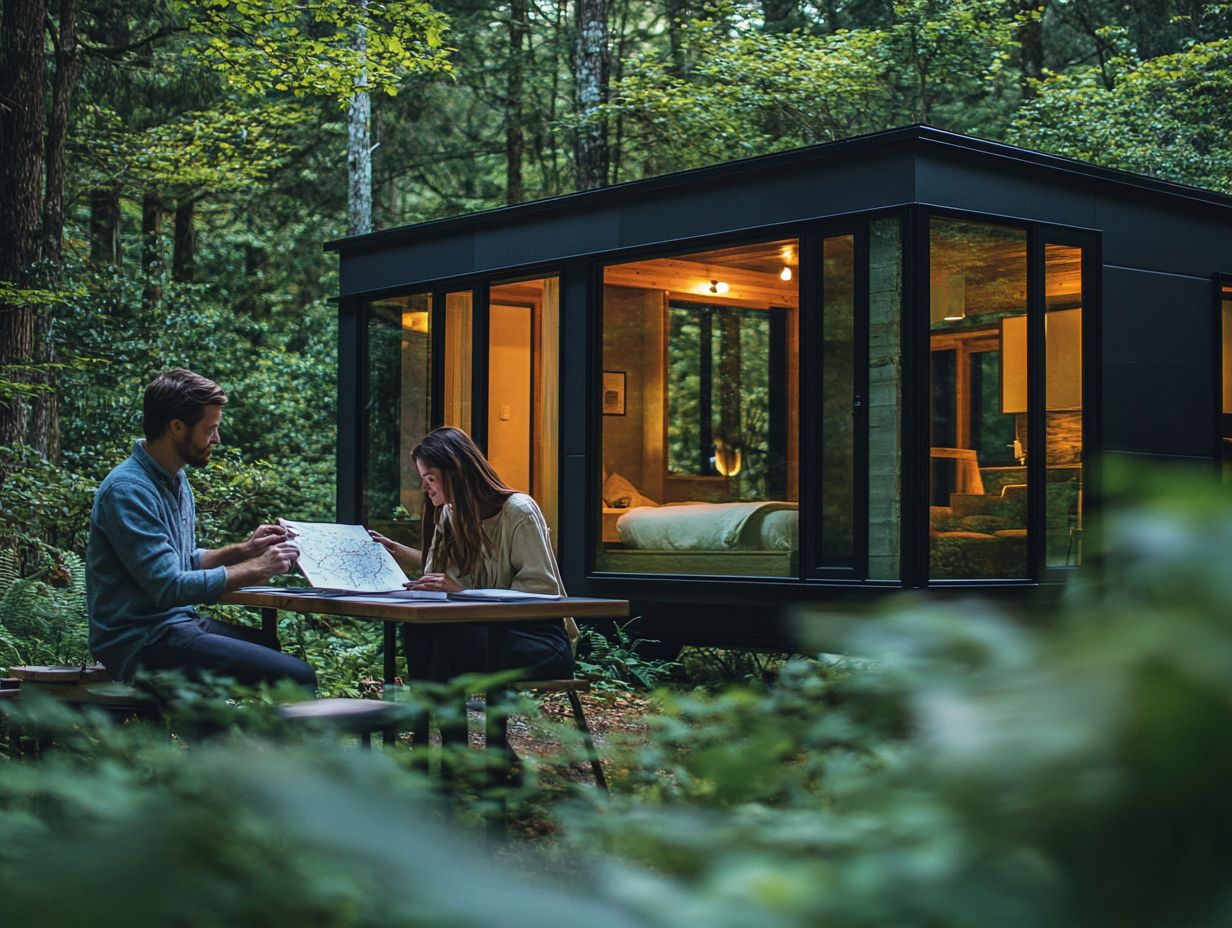
- Local ordinances are rules and regulations set by local governments that impact the placement and construction of tiny houses.
- Zoning laws, building codes, and land use regulations are important when navigating local ordinances for tiny houses.
- Conduct thorough research, build relationships with local officials, and stay compliant to overcome challenges and successfully navigate local ordinances for tiny houses.
Understanding Local Ordinances for Tiny Houses
Understanding local ordinances for tiny houses is crucial for anyone choosing a simpler way of living and exploring housing options in Arizona’s diverse counties, such as Pima and Coconino. These regulations dictate everything from building codes to property taxes, and following them is vital for securing a Certificate of Occupancy for your tiny house.
Navigating these laws can be intricate, particularly for those considering tiny houses on wheels (THOW) or small homes as residential options in areas that may include planned communities or Accessory Dwelling Units (ADUs) small homes on a property separate from the main house.
What are Local Ordinances?
Local ordinances are regulations put in place by local governments to oversee land use, construction rules, and community standards. They play a pivotal role in the tiny house movement across Arizona and beyond, including areas near the Colorado River and the Grand Canyon.
These regulations maintain order and ensure safety within communities. They address issues like zoning laws, which outline how land can be utilized, and building codes that set construction standards. For instance, local officials create ordinances that specify where tiny houses can be situated. This often dictates minimum square footage and necessary utilities. This legal framework strikes a balance between the innovative lifestyles advocated by the tiny house movement and the need for sustainable development and healthy community living.
Understanding these local ordinances is crucial for anyone considering a shift to tiny living while ensuring compliance with local policies.
Why are they Important for Tiny Houses?
Local ordinances are vital for tiny houses, establishing the foundation for building codes and safety standards. These ensure the structural integrity and livability of these unique homes.
These regulations determine where you can legally place your tiny home, what amenities must be included, and how you can connect utilities. By following these local guidelines, you not only enhance your own safety but also help uphold the community s health standards. Securing a Certificate of Occupancy is essential, as it verifies that your tiny house meets all necessary codes and regulations before anyone can safely call it home.
Local officials take these ordinances seriously, conducting inspections and reviewing applications to maintain a standard that supports the overall viability of tiny house living while fostering trust within the community and enhancing community development.
Types of Local Ordinances to Consider
When exploring the construction and placement of tiny houses, familiarize yourself with the various local ordinances that dictate zoning laws, building codes, and land use regulations. This is particularly crucial in areas like Arizona, where requirements can vary significantly between counties such as Pima and Coconino.
Being well-informed about these regulations will help you navigate the complexities of your tiny house journey with confidence.
Now that you’re informed, take the next step toward your tiny home adventure. Research your local ordinances today!
Zoning Laws
Zoning laws (rules about where you can build) dictate where you can place tiny houses, determining whether they are permitted as residential dwellings. This is particularly important for tiny houses on wheels (THOW), which may face unique compliance challenges with local ordinances.
These regulations have a significant impact on tiny house living, affecting placement options, allowable densities, and the types of structures permitted in specific areas. For example, some municipalities may restrict THOWs to designated zones or require adherence to traditional housing standards, impacting both affordability and accessibility.
Understanding these laws is crucial for you as a potential tiny house resident. It helps you navigate opportunities for community living, embrace sustainable practices, and pursue the dream of home ownership in a compact form.
By exploring local codes and identifying favorable zoning districts, you can discover pathways to a simpler and more environmentally friendly lifestyle.
Understanding Building Codes for Tiny Homes
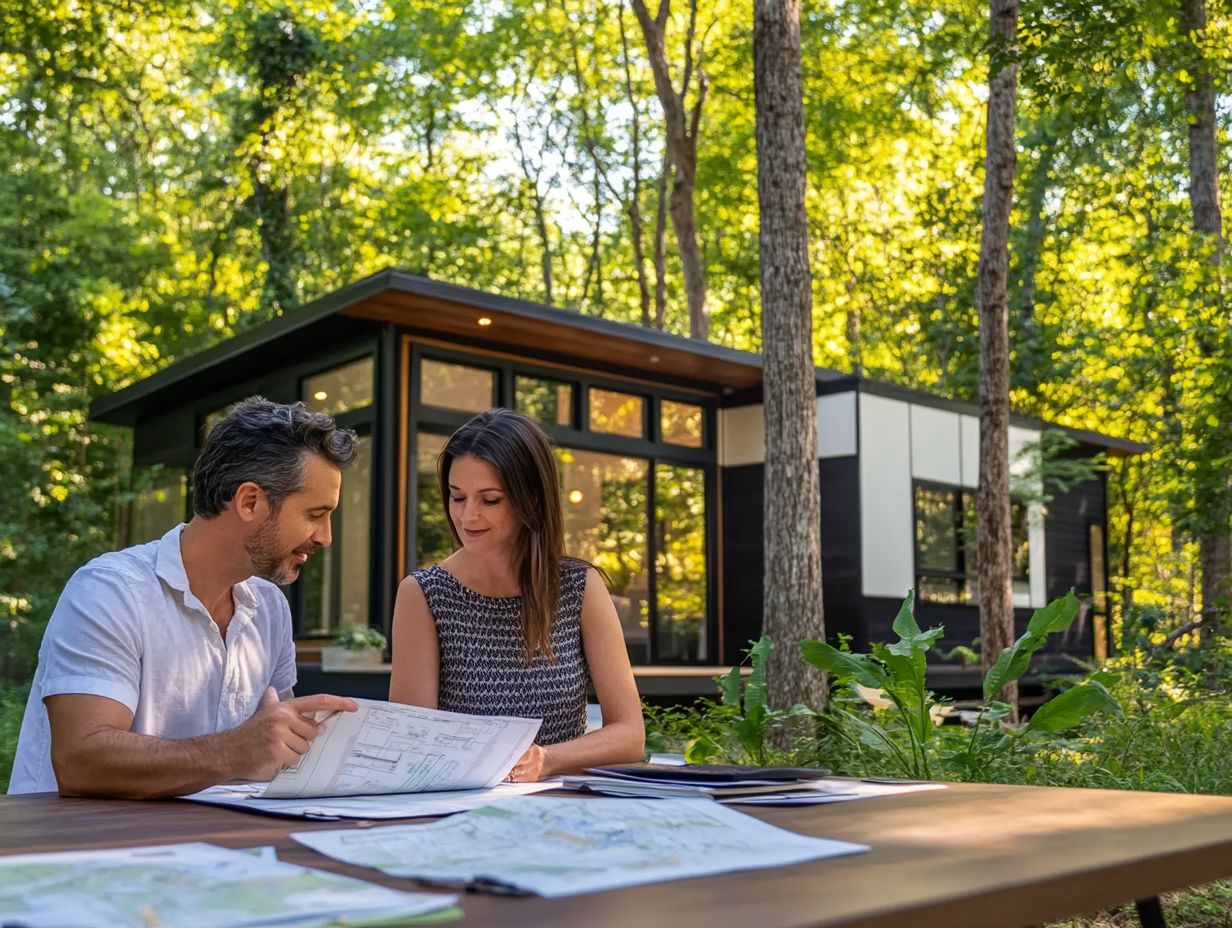
Building codes (minimum safety standards for construction) establish the minimum safety standards for tiny houses. These codes are essential to ensure your structures meet the necessary inspection requirements (checks by officials to ensure safety) for legal occupancy.
These regulations not only uphold the integrity of your building but also safeguard you and your occupants from potential hazards. For those venturing into tiny house building, maneuvering through the maze of construction permits (official approvals needed before building) can feel overwhelming. Each locality has its own criteria, making it crucial for you to grasp how the codes specifically apply to these compact dwellings.
By complying with safety standards, you facilitate smoother inspection processes, ultimately paving the way for legal occupancy. Adhering to these regulations goes beyond mere legality; it signifies your commitment to quality living in a smaller footprint while embracing sustainability.
Land Use Regulations
Land use regulations determine how you can utilize land within specific jurisdictions, directly influencing the placement and legality of tiny houses in various communities.
These regulations serve several important functions, such as ensuring public safety, maintaining property values, and promoting sustainable development, especially for tiny cabins and other tiny house-friendly options. However, they can also create significant hurdles for those eager to embrace tiny living. Local officials play a vital role in enforcing these regulations, often balancing community interests with individual aspirations for alternative housing solutions. Understanding tiny house living and zoning is crucial for navigating these challenges.
While some regulations can facilitate a smooth integration of tiny homes into existing neighborhoods, others may impose zoning restrictions, minimum square footage requirements, or limitations on where these homes can be situated, complicating your quest for affordable housing. Understanding both the benefits and challenges of these regulations is crucial for your advocacy efforts aimed at fostering more inclusive housing policies, especially in the context of rapidly rising housing costs.
Researching Local Ordinances
Researching local ordinances for tiny houses is crucial for you as a potential home builder. By doing so, you ensure compliance with zoning regulations, building codes, and other requirements established by local authorities in areas like Arizona.
This proactive approach not only safeguards your investment but also streamlines the construction process, allowing you to build your dream tiny house with confidence while adhering to building codes and construction permits.
Start your journey to tiny living today by exploring your local zoning laws!
Where to Find Information
You can find information on local ordinances through a variety of resources, including government websites, local officials, and community development offices that focus specifically on regulations affecting tiny houses, including zoning codes (rules for land use) and building permits (permissions to construct).
To ensure compliance and streamline your building process, consider exploring dedicated platforms like Municode, which offers access to municipal codes for many areas. Connecting with state and local planning departments can also provide valuable insights tailored to specific zoning laws.
Networking with local builders’ associations or online communities centered around tiny house living can shed light on local regulations. Others who have navigated similar challenges may share helpful insights and experiences.
Utilizing these resources collectively gives you a solid foundation to grasp the intricacies of tiny house ordinances and the various building codes applicable in different counties.
How to Interpret and Apply the Information
Interpreting and applying local ordinances with precision is crucial for tiny house construction to ensure compliance with safety standards and building codes. It ensures that you grasp the nuances of regulations and their implications for zoning and building codes.
This understanding not only makes for a smoother construction process but also safeguards you from potential legal complications in the future, especially concerning height requirements and emergency exits.
By familiarizing yourself with local zoning laws, you can pinpoint designated areas where tiny homes are allowed, along with any restrictions concerning size, mobility, and foundation requirements.
Consult municipal websites or engage with local planning departments to gain invaluable insights. Stay informed about homeowner association (HOA) rules as they can add more restrictions and complicate your building journey further.
Navigating Challenges with Local Ordinances
Navigating local ordinances can be a thrilling yet challenging adventure for tiny house enthusiasts. Understanding compliance requirements and engaging with local authorities can often be complex and daunting.
Overcoming Common Hurdles in Tiny House Construction
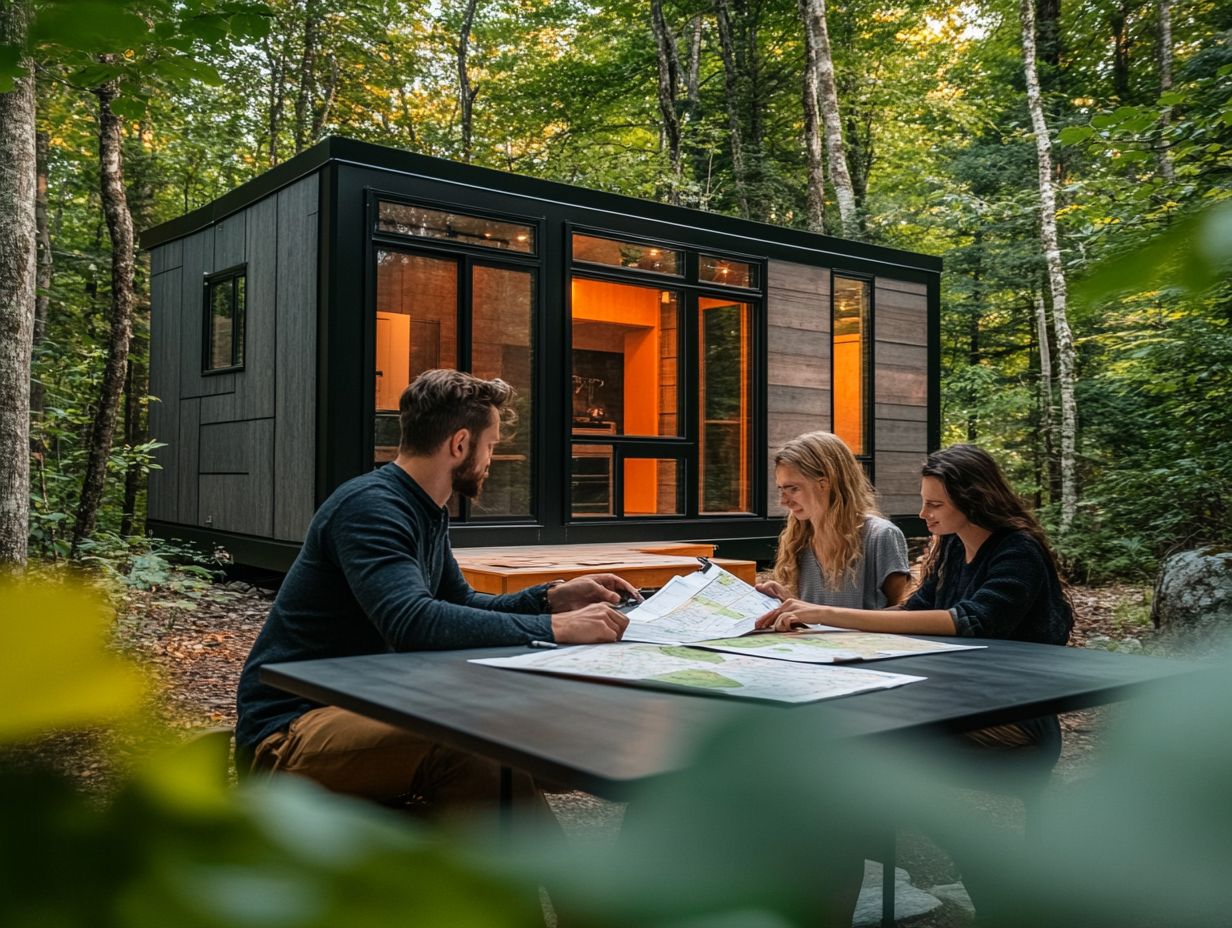
When you’re navigating the world of local ordinances for tiny houses, you might encounter common obstacles like stringent building codes, zoning restrictions, and the necessity for specific permits, all of which can seriously slow your progress.
These challenges can feel frustrating and overwhelming, especially when you’re trying to make sense of the maze of regulations that differ from one municipality to another. You may find yourself tangled in a web of conflicting requirements that often seem crafted to thwart innovative housing solutions.
However, you can take proactive steps to confront these issues. Engaging with local building officials early in the planning phase can provide you with valuable insights into what s permissible within the regulations.
Joining a local tiny house community or advocacy group can offer you support, resources, and shared experiences. This not only helps to demystify the building process but also fosters relationships with local government officials who may champion navigating tiny house community regulations for more flexible zoning laws.
Working with Local Officials and Communities
Building strong relationships with local officials and communities is essential as you navigate the complexities of local ordinances regarding tiny houses. By fostering an environment of support and understanding, you create a foundation that will significantly enhance your success in this endeavor.
Building Relationships and Gaining Support
Building relationships and gaining support from local officials and communities can significantly enhance the success of your tiny house projects. This creates understanding and collaboration.
By actively engaging with local leaders and community members, you can establish a dialogue that encourages transparency and trust. Consider hosting informational sessions and community workshops to familiarize stakeholders with the many benefits these housing options offer, such as affordability and sustainability.
Collaborating on pilot projects allows you to showcase practical solutions. This demonstrates how tiny houses can seamlessly integrate into existing neighborhoods while effectively addressing housing shortages. This grassroots approach helps you navigate regulatory hurdles and cultivates a sense of ownership among community members. Subsequently, this leads to increased acceptance and support for your future initiatives.
Tips for Staying Compliant with Local Ordinances
Maintaining compliance with local ordinances is crucial for tiny house builders and owners. This not only guarantees the safety of these unique living spaces but also ensures they operate within the legal framework set by local authorities.
Maintaining Your Tiny House and Property
Maintaining your tiny house and property is essential not just for its longevity but also for adhering to local ordinances that govern safety and structural integrity.
Regular inspections play a critical role in this process. They allow you to spot potential issues before they escalate into major problems. It s wise to familiarize yourself with the specific regulations in your area, including zoning laws, building codes, and waste disposal requirements.
Consulting with a local inspector can further bolster your compliance with these important guidelines. Keeping detailed records of your maintenance activities not only supports compliance but also enhances the overall appeal of your tiny house. This can be a significant advantage if you ever choose to sell or rent it out.
By prioritizing these practices, you create a safe, efficient living space that you can truly enjoy.
Frequently Asked Questions
What are local ordinances for tiny houses?
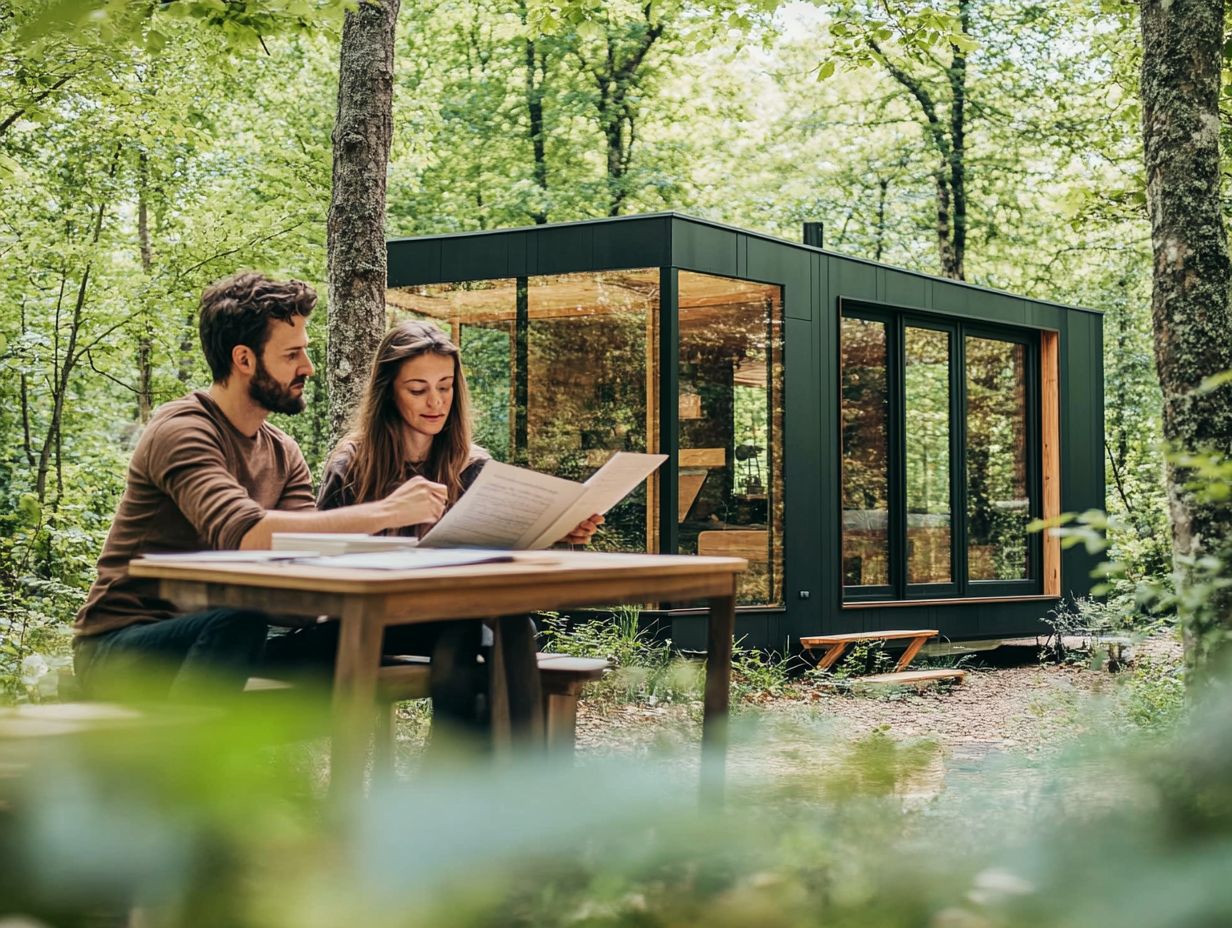
Local ordinances for tiny houses are laws and regulations set by your city or town. They dictate where and how tiny houses can be built, placed, and used within the jurisdiction.
Why is it important to navigate local ordinances for tiny houses?
Understanding and navigating local ordinances for tiny houses is important. Failure to comply with these regulations can lead to fines, penalties, or even having your tiny house removed from the property.
Can I legally live in a tiny house in any location?
No, you cannot legally live in a tiny house in any location. You must adhere to local ordinances and zoning laws to determine where tiny houses are allowed to be used as a permanent residence.
Are there different types of local ordinances for tiny houses?
Yes, there are different types of local ordinances for tiny houses. Some cities may allow tiny houses on wheels as accessory dwelling units, while others may only allow them as temporary structures for recreational use.
How can I find out about local ordinances for tiny houses in my area?
The best way to find out about local ordinances for tiny houses in your area is to contact your city or town’s planning department or visit their website. They will have the most up-to-date information and can answer any specific questions you may have.
What should I do if there are no local ordinances for tiny houses in my area?
If there are no local ordinances for tiny houses in your area, you should still consult with your city or town’s planning department before building or placing a tiny house. They can provide guidance on any applicable zoning laws or building codes that may apply.
If you have more questions, don’t hesitate to reach out to your local planning department!




